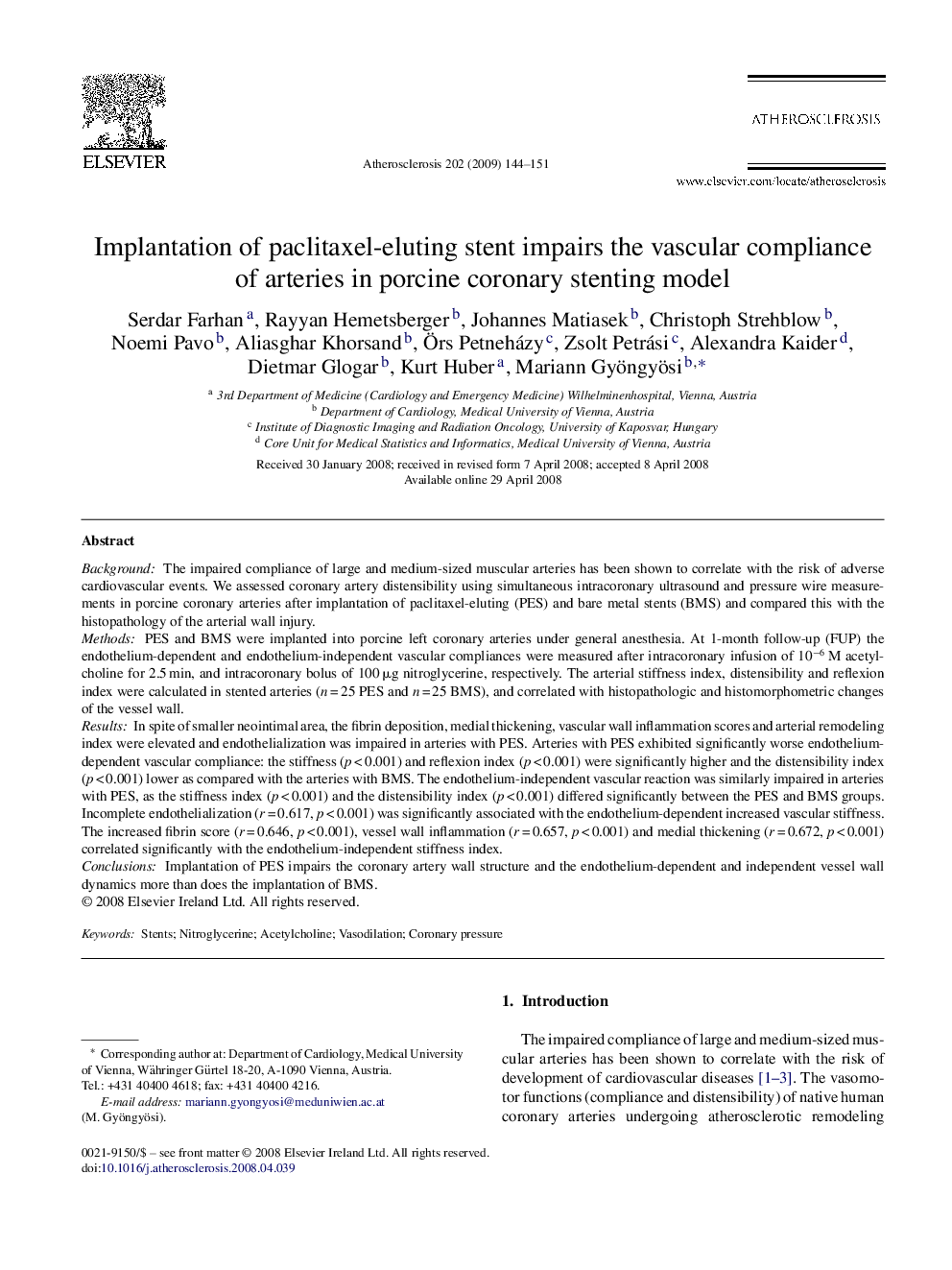| Article ID | Journal | Published Year | Pages | File Type |
|---|---|---|---|---|
| 2893776 | Atherosclerosis | 2009 | 8 Pages |
BackgroundThe impaired compliance of large and medium-sized muscular arteries has been shown to correlate with the risk of adverse cardiovascular events. We assessed coronary artery distensibility using simultaneous intracoronary ultrasound and pressure wire measurements in porcine coronary arteries after implantation of paclitaxel-eluting (PES) and bare metal stents (BMS) and compared this with the histopathology of the arterial wall injury.MethodsPES and BMS were implanted into porcine left coronary arteries under general anesthesia. At 1-month follow-up (FUP) the endothelium-dependent and endothelium-independent vascular compliances were measured after intracoronary infusion of 10−6 M acetylcholine for 2.5 min, and intracoronary bolus of 100 μg nitroglycerine, respectively. The arterial stiffness index, distensibility and reflexion index were calculated in stented arteries (n = 25 PES and n = 25 BMS), and correlated with histopathologic and histomorphometric changes of the vessel wall.ResultsIn spite of smaller neointimal area, the fibrin deposition, medial thickening, vascular wall inflammation scores and arterial remodeling index were elevated and endothelialization was impaired in arteries with PES. Arteries with PES exhibited significantly worse endothelium-dependent vascular compliance: the stiffness (p < 0.001) and reflexion index (p < 0.001) were significantly higher and the distensibility index (p < 0.001) lower as compared with the arteries with BMS. The endothelium-independent vascular reaction was similarly impaired in arteries with PES, as the stiffness index (p < 0.001) and the distensibility index (p < 0.001) differed significantly between the PES and BMS groups. Incomplete endothelialization (r = 0.617, p < 0.001) was significantly associated with the endothelium-dependent increased vascular stiffness. The increased fibrin score (r = 0.646, p < 0.001), vessel wall inflammation (r = 0.657, p < 0.001) and medial thickening (r = 0.672, p < 0.001) correlated significantly with the endothelium-independent stiffness index.ConclusionsImplantation of PES impairs the coronary artery wall structure and the endothelium-dependent and independent vessel wall dynamics more than does the implantation of BMS.
